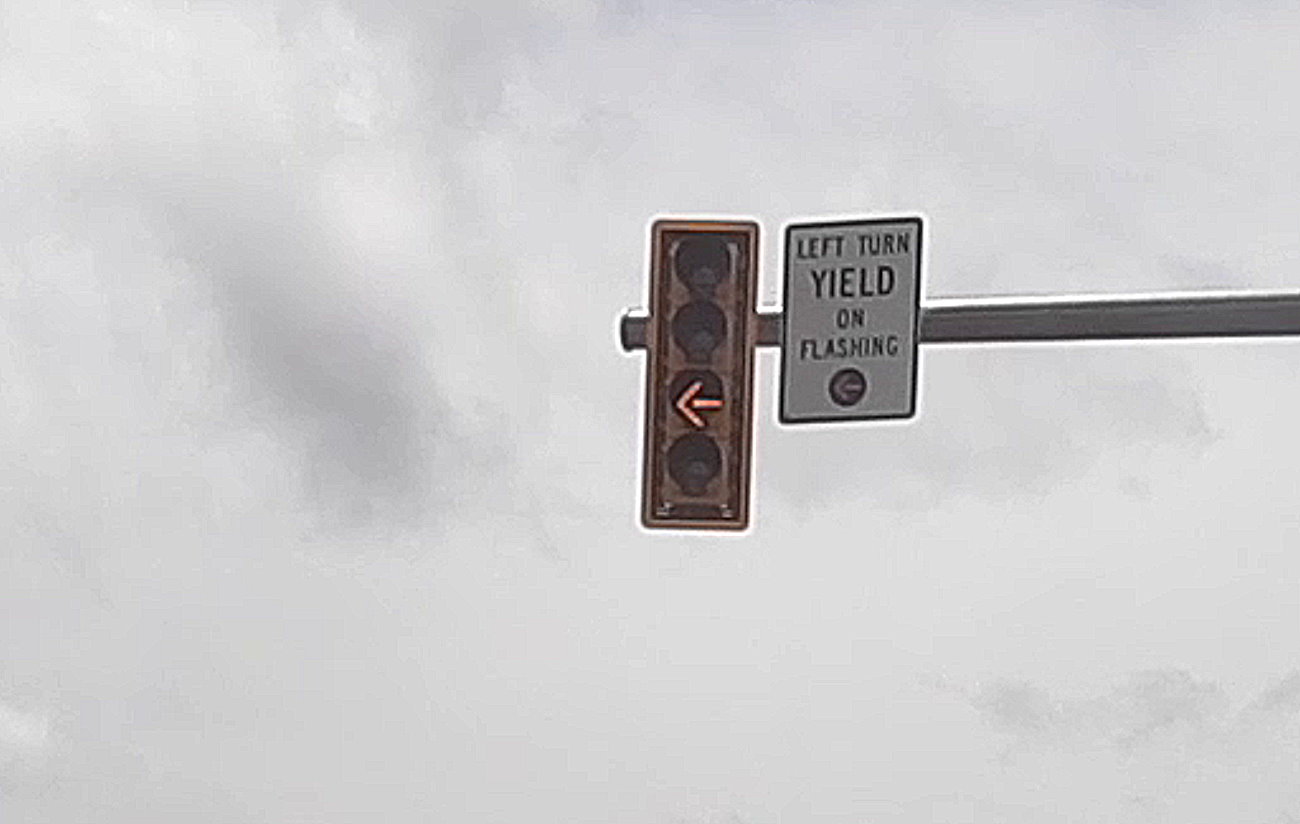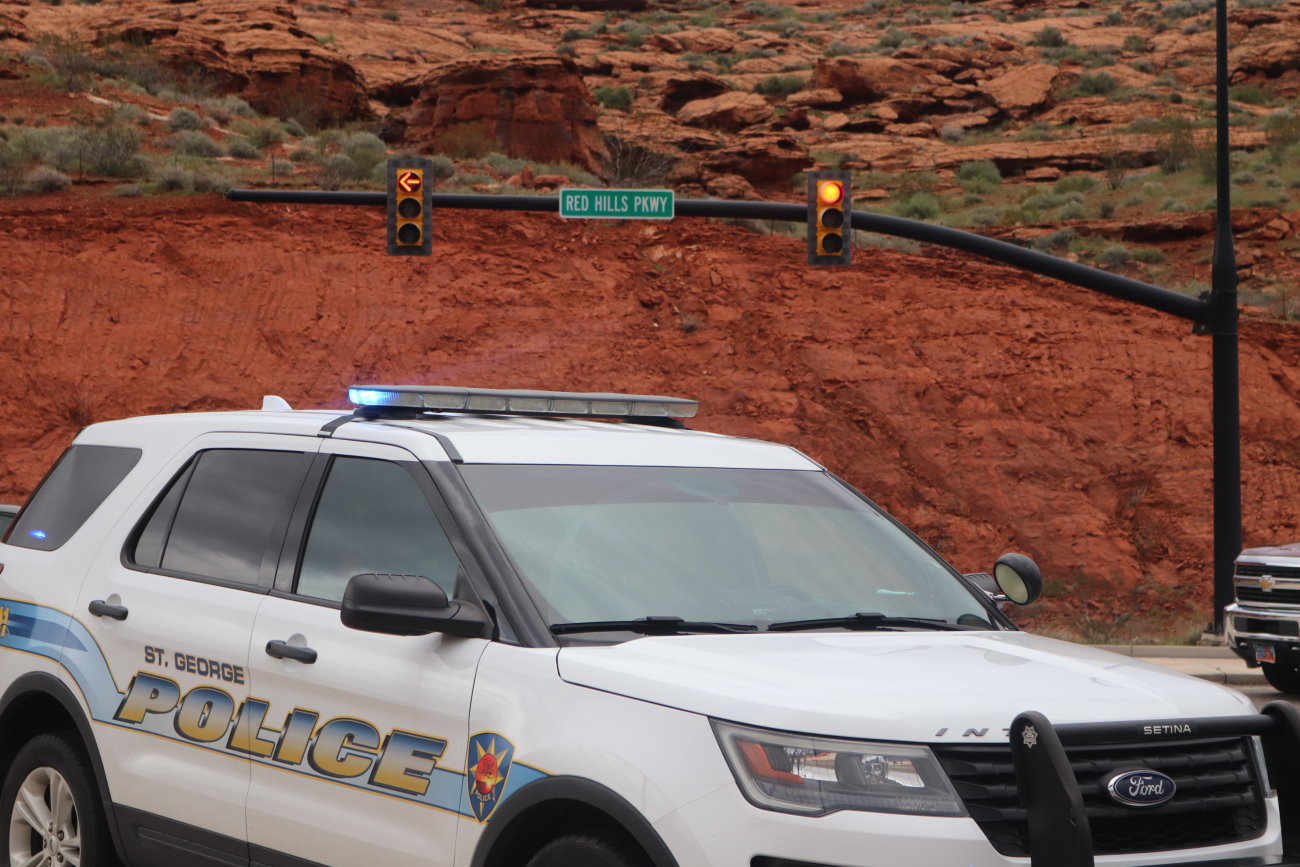ST. GEORGE — What do the intersections of 1000 East and St. George Boulevard; River Road and 700 South, and Sunset Boulevard and Dixie Drive have in common? They’re considered to be among the worst intersections for crashes in St. George.

Between March 1, 2018 and March 31, 2019, the St. George Police recorded the following number of crashes at each intersection:
- 1000 East and St. George Boulevard – 40 crashes.
- Sunset Boulevard and Dixie Drive – 35 crashes.
- River Road and 700 South – 24 crashes.
That represents the number of vehicle-related crashes overall at each location, and not a breakdown of the particular cause of those crashes.
1000 E. St. George Boulevard is one of the main entry and exit points for St. George at Exit 8 of Interstate 15, while the other two intersections are located on major arteries that cut through the city. River Road connects to the southern part of St. George while Sunset Boulevard is counted as a part of the county’s heavily traveled east-west corridor between Ivins and I-15.
1000 East and St. George Boulevard is infamous in St. George and beyond, St. George Police officer Andy Mickelson said. While it remains the worst intersection for crashes in St. George, it has also counted as one of the worst intersections in the state, he said.
“We have several intersections that are high-crash areas because of the amount of traffic and number of violations that occur in those intersections,” Mickelson said as he stood in front of the busy 1000 East and St. George Boulevard intersection.

Other intersections he mentioned were the River Road and Mall Drive intersections with Riverside Drive, adding, “I could go on.”
Like everything else that has grown with the population of Washington County, so has the traffic moving through St. George and the region.
According to the latest data from the U.S. Census, Washington County’s current population is around 171,700.
Those are the estimated permanent resident numbers that do not take seasonal residents and overnight visitors into account. The University of Utah’s Kem Gardner Center that the estimated number of temporary residents who passed through the area bumps the population to 222,600 residents.
That can make for a lot of traffic. And the more traffic there is, the more chance there is for motorists to join in the more popular ways to cause collisions, like failing to yield to oncoming traffic and following too closely behind another vehicle.

Collision causes and how to avoid them
“One of the biggest problems is failing to yield the right of way,” Mickelson said referring to left turns.
People making turns in an intersection or attempting to drive on through, for whatever reason, don’t pay attention and don’t see the oncoming traffic, or mistakenly think they have enough time and space to shoot a gap in traffic, he said. Being distracted and impatient while at the intersection doesn’t help.
“Make sure you pay attention to what the lights are telling you,” Mickelson said, placing particular emphasis on solid and flashing yellow lights.
When a traffic light turns yellow, some drivers think they need to speed up to get through the intersection. This can often lead to drivers colliding with oncoming traffic when making a left turn.
“Even if the light’s yellow, you still need to make sure the cars that are approaching are going to stop when the lights turn red. Sometimes they run the red light,” Mickelson said.
Drivers also need to make sure they have enough space and time between vehicles when making a left turn so they don’t pull out in front of someone, he said.

The bane of St. George drivers appears to be the flashing yellow light. It is seen as either unneeded or confusing, according to some of the reader comments on the various crashes St. George News has covered over the years.
When the yellow light is flashing, it means you need to yield the right of way to oncoming traffic, especially on a left turn, Mickelson said. An example of the flashing light can be found at the intersection of Red Hills Parkway and Skyline Drive.
“Sometimes people see (the flashing yellow light) and think it’s a solid and they go and turn,” Mickelson said. “Don’t try to gamble with either your safety and other people’s safety by trying to beat those cars on a left turn.”
Another major cause of wrecks at intersections are vehicles following too closely.
Mickelson recommends keeping a two-second distance between your vehicle and the one in front of you. On streets with higher spreed limits like Dixie Drive and Bluff, he advises that you expand that distance.

State data
According to a 2016 report by Utah Department of Public Safety, among the top causes of crashes in the state, left turns held the No. 3 position behind driving straight ahead and being stopped in a traffic lane.
“It’s thousands of pounds of metal, and when those thousands of pounds of collide with other thousands of pounds, that creates a lot of costs and a lot of pain for people,” Mickelson said.
As for what people got cited for the most: following too close behind another vehicle was no. 1, followed by failing to yield the right of way and making an improper turn, according to the 2016 data.
“We don’t like to write tickets, but we have to in order to maintain a level of safety in out community and to keep everyone’s quality of life where it is,” Mickelson said. “We really appreciate the safe drivers that are trying to make a difference in the community.”
Email: [email protected]
Twitter: @MoriKessler
Copyright St. George News, SaintGeorgeUtah.com LLC, 2019, all rights reserved.